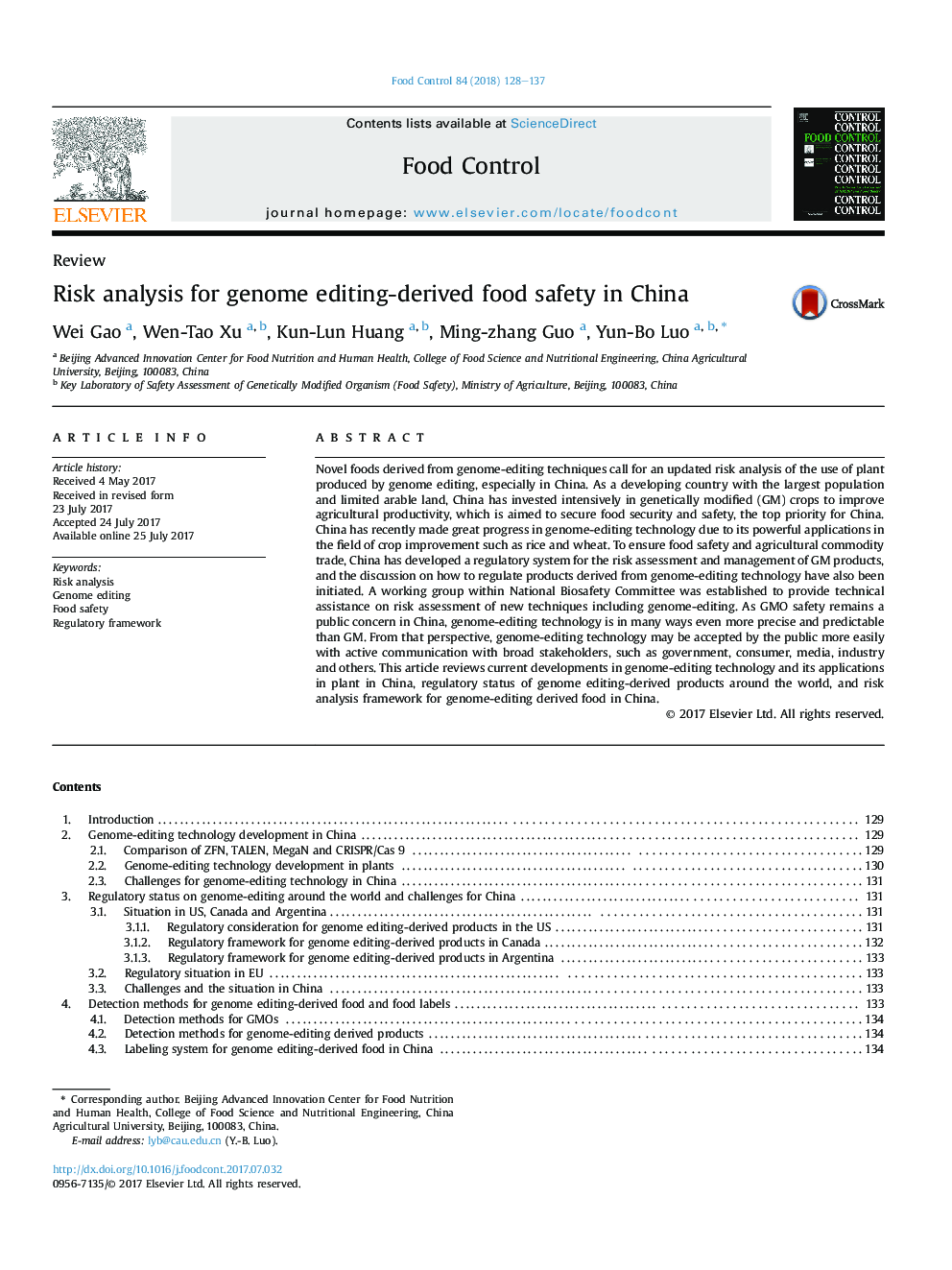| کد مقاله | کد نشریه | سال انتشار | مقاله انگلیسی | نسخه تمام متن |
|---|---|---|---|---|
| 5767290 | 1628380 | 2018 | 10 صفحه PDF | دانلود رایگان |

- Genome-editing technology development.
- Challenges for genome-editing technology.
- Detection methods for genome editing-derived food and food labels.
- Risk assessment and management of genome editing-derived products.
Novel foods derived from genome-editing techniques call for an updated risk analysis of the use of plant produced by genome editing, especially in China. As a developing country with the largest population and limited arable land, China has invested intensively in genetically modified (GM) crops to improve agricultural productivity, which is aimed to secure food security and safety, the top priority for China. China has recently made great progress in genome-editing technology due to its powerful applications in the field of crop improvement such as rice and wheat. To ensure food safety and agricultural commodity trade, China has developed a regulatory system for the risk assessment and management of GM products, and the discussion on how to regulate products derived from genome-editing technology have also been initiated. A working group within National Biosafety Committee was established to provide technical assistance on risk assessment of new techniques including genome-editing. As GMO safety remains a public concern in China, genome-editing technology is in many ways even more precise and predictable than GM. From that perspective, genome-editing technology may be accepted by the public more easily with active communication with broad stakeholders, such as government, consumer, media, industry and others. This article reviews current developments in genome-editing technology and its applications in plant in China, regulatory status of genome editing-derived products around the world, and risk analysis framework for genome-editing derived food in China.
Journal: Food Control - Volume 84, February 2018, Pages 128-137